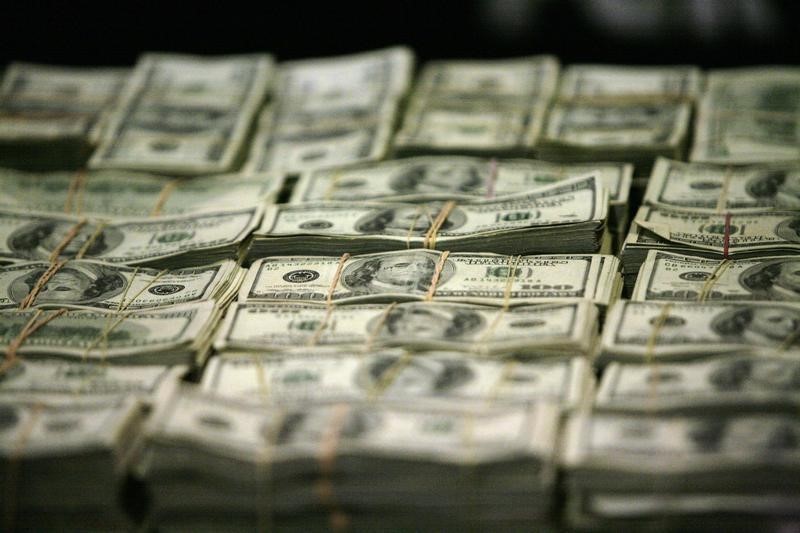Investing.com - The dollar turned lower against a basket of other major currencies on Wednesday, after the release of mixed U.S. economic reports and as positive remarks by European Central Bank President Mario Draghi boosted demand for the single currency.
The Institute of Supply Management said its non-manufacturing purchasing manager's index fell to a 13-month low of 55.7 last month, below forecasts for a reading of 57.0 and down from 57.8 in April.
The report came after payroll processing firm ADP said non-farm private employment rose by 201,000 last month, just above expectations for an increase of 200,000.
Separately, the U.S. Bureau of Economic Analysis said that the trade deficit narrowed to $40.88 billion in April from a revised deficit of $50.57 billion in March. Analysts had expected the U.S. trade deficit to narrow to $44.0 billion in April.
The U.S. dollar index, which measures the greenback’s strength against a trade-weighted basket of six major currencies, was down 0.55% at 95.47, the lowest level since May 22.
EUR/USD advanced 0.84% to a two-week high of 1.1246 after ECB President Mario Draghi said the bank's asset purchase programs will continue until the end of September 2016 and "until the path of inflation is consistent with our aim of achieving inflation rates below, but close to, 2%."
Speaking at the central bank's monthly press conference, Draghi also said that the ECB's asset-buying program is contributing to economic growth and that the full implementation of its monetary policy measures will "provide the necessary support to the euro area economy."
The comments came after the ECB held its benchmark interest rate at a record-low 0.05%, in line with market expectations.
Data earlier showed that euro zone retail sales rebounded 0.7% in April and were up 2.2% from a year earlier, while the region’s unemployment rate fell to 11.1% in April from 11.2% in March.
The pound trimmed losses, with GBP/USD still down 0.09% to 1.5329.
Sterling came under pressure after the Markit services purchasing managers' index slowed to 56.5 last month from 59.5 in April. It was its lowest level since December. Economists had expected the index to tick down to 59.2.
Elsewhere, the yen and the Swiss franc were lower, USD/JPY easing 0.09% to 124.24, pulling away from Tuesday's 12-year highs of 125.05, and with USD/CHF rising 0.20% to 0.9348.
The Australian dollar was stronger, with AUD/USD up 0.43% to 0.7805, while NZD/USD edged down 0.10% to 0.7175.
Earlier Wednesday, the Australian Bureau of Statistics said gross domestic product rose 0.9% in the first quarter, beating expectations for a growth rate of 0.7% Year-on-year, Australia's GDP rose 2.3% in the three months to March, compared to expectations for an increase of 2.1%.
USD/CAD rose 0.30% to trade at 1.2439 after data showed that Canada's trade deficit narrowed less than expected to C$2.97 billion in April from a revised deficit of C$3.85 billion the previous month.
